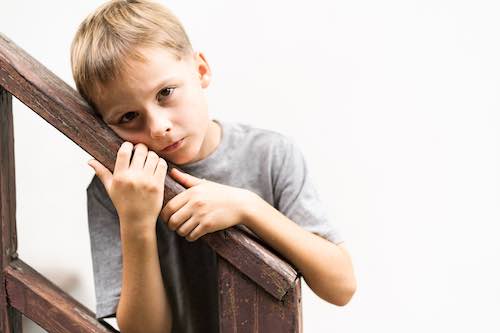A family therapist shares some simple steps for handling kids acting out during stay-home orders.
Raise your hand if you have been feeling challenged by your children lately. I raised my hand. Did you?
Under optimal circumstances parenting is a demanding, albeit rewarding, balancing act of meeting needs, setting limits, getting tasks accomplished, and nurturing minds, bodies and emotions. Under COVID-19 limitations, these duties are even more trying.
For starters, parents are managing dual roles as parent (or working-parent) and educator. Yet many no longer have go-to incentives, such as seeing friends, to motivate children to complete schoolwork. Meanwhile, routines have changed dramatically, which can throw children for a loop. After all, they crave consistency to feel secure. That’s not to mention challenging emotions such as sadness and frustration at missing the way things are meant to be. Exhausted, yet? Our kids are, too.
Under these unusual circumstances, kids are asked to perform a whole host of new cognitive, emotional and behavioral skills that they do not yet have the capability to eloquently manage. As a result, they may be more antsy, whiny, explosive, irritable or even confrontational.
For example, the current home-schooling system requires more self-initiation, organization, patience and avoidance of tempting distractions. These cognitive skills, managed by the brain’s executive branch, won’t fully develop until approximately 25 years old. But children can’t say, “My pre-frontal cortex won’t restrain my urge to interrupt your important work call.” No. Kids are just disruptive.
Here’s the good news. There is something we can do.
When we understand their struggle, we can thoughtfully approach problems by offering support and compassion instead of lectures and frustration. That might mean lowering expectations at times (of us and them). However, with curiosity and creativity we can often help them rise to the occasion.
Step 1: Get Curious
Get curious about the cognitive, behavioral or emotional skills that may be lacking when challenging behaviors arise. Is there a struggle with keeping track of school tasks, managing transitions or soothing emotions? Engage your child in getting curious, too. But instead of asking, “Why?” — which is rarely productive — try these:
- Invite your child to pick an emoji that reflects, “What it’s like when it’s time to … [do school work, play quietly while Mommy works, go to bed, etc.]?” Ask what the emoji is saying, thinking and needing.
- Ask your child: “If something magical could happen tonight to make life easier or better in some way, what would you notice is different tomorrow?”
Step 2: Empathize
The quickest way to soothe turmoil is by expressing empathy for vulnerable feelings (e.g. hurt or shame) that hide beneath protective emotions (e.g. anger or frustration). Acknowledging that “this is hard” can help children of any age feel understood and regain calm. In escalated moments, however, it can be challenging to get the message across. When you’re frustrated or they’re not ready to hear it, try these:
- Draw a symbol of love and connection such as a heart or sad face to give to them. Write an empathic message such as “This is hard,” or “I wonder what happened?”
- Ask the question: “I wonder what you’d want to be doing right now if it wasn’t for coronavirus?” Not only can this unexpected query surprise them out of their mood but it may bring to light compounding needs and feelings.
Step 3: Get Creative
Once we have hunches about needs and feelings, we can strategize ways to provide more support. Support doesn’t have to look like hovering. Nor should it. We want to teach strategies that build skills, rather than create reliance on us. This is where creativity comes in. Here are some examples:
- Make a stuffed animal teacher for the day. Ask your child to act out the voice: “Time for reading,” “Time for lunch.” This helps children rehearse self-talk, an important skill that moves us through daily activities.
- Play charades after completing school or self-care tasks. Your child acts out the completed task. You guess. This positively reinforces task completion and provides a quick movement break to help with focus on subsequent tasks.
- Create an expectation bubble map. Draw an expectation (e.g. brushing teeth) in a center circle. Invite your child to add circles around the outside that contain choices regarding how to complete the task (e.g. while humming, doing a silly dance, with a timer, etc.). Let your child select a “choice bubble.” This provides children with a greater sense of control over tasks they otherwise don’t want to do.
Be playful. Experiment. Even if your children continue to be antsy, whiny and defiant at times (they are children, after all) by modeling curiosity, empathy and creative problem-solving when things get tough, you are already teaching some of the most valuable life skills.
Erica Curtis is a marriage and family therapist, board-certified art therapist and widely cited expert on emotional and relationship health. She is past director for the American Art Therapy Association, past president of the Southern California chapter and internationally sought speaker. She is an instructor for UCLArts & Healing and maintains a psychotherapy practice in San Juan Capistrano. She is co-author of the award-winning book, “The Innovative Parent: Raising Connected, Happy, Successful Kids through Art.” | therapywitherica.com








Leave a Reply